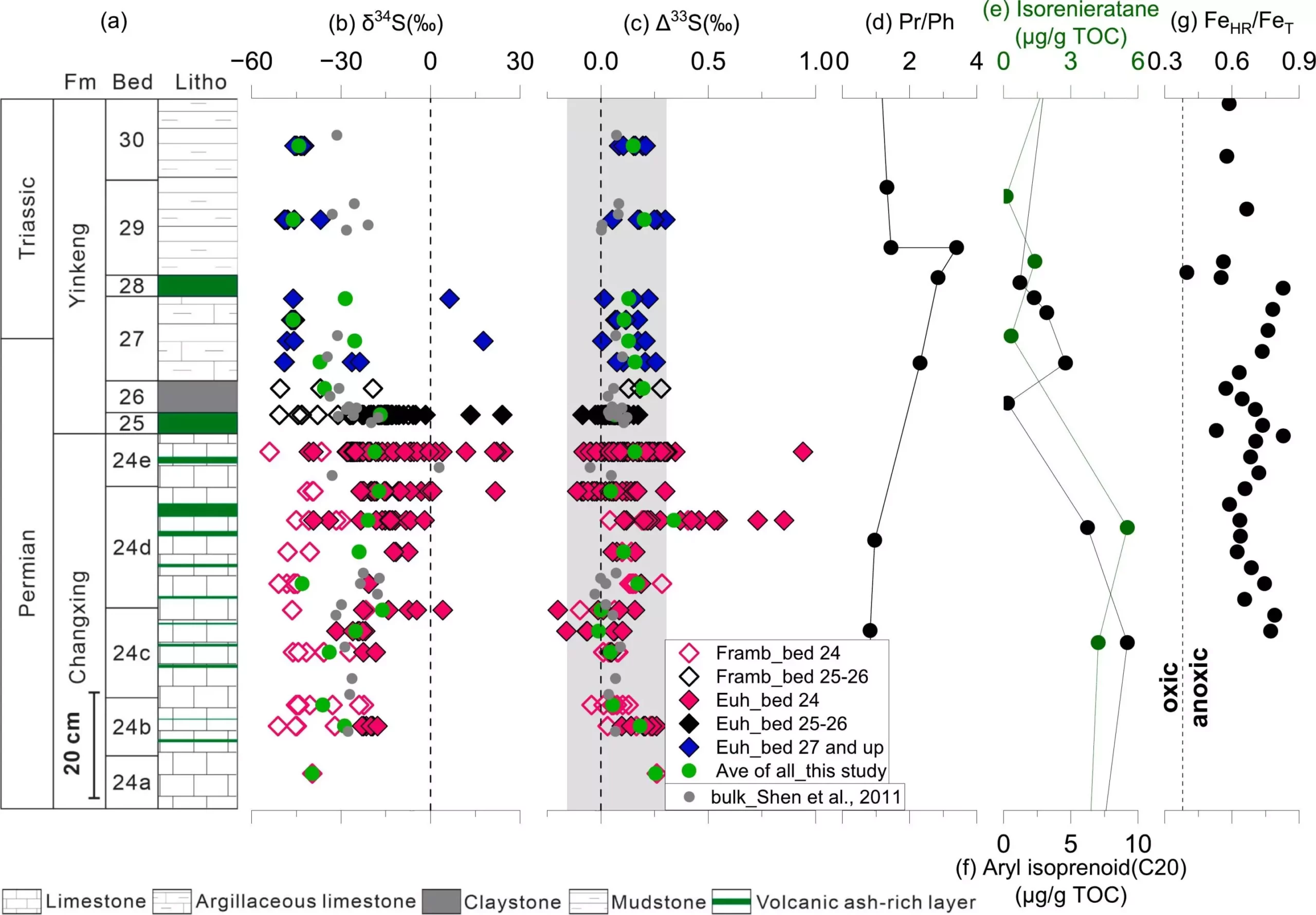For decades, both the public and scientists have been captivated by the concept of catastrophic mass extinctions that occurred millions of years ago, decimating Earth’s ecosystems. In a groundbreaking publication by Jack Sepkoski and David Raup in 1982, they identified the “Big Five” extinction events in the planet’s geological history. These events include the end-Ordovician, Late Devonian, end-Permian, end-Triassic, and end-Cretaceous extinctions.
Among these five events, the end-Permian mass extinction stands out as the most significant. Approximately 81% of marine species and 70% of terrestrial vertebrate species went extinct during this catastrophe. Furthermore, land plants also experienced significant mutations and destruction. The trigger for this mass extinction is believed to be explosive volcanism in the Siberian Large Igneous Province, which covered an estimated area of 7,000,000 km2.
A recent study published in Chemical Geology delves into the link between volcanic activity and ozone layer damage. Dr. Rucao Li and colleagues from Nanjing University, China, analyzed pyrite samples from the Meishan section in South China to investigate the impact of sulfur dioxide emissions from volcanoes on stratospheric ozone.
Using secondary ion mass spectrometry, the researchers detected the presence of three sulfur isotopes in microscopic pyrite grains. They found a distinct positive change in Mass-Independent Fractionation sulfur isotopes (MIF-S) in an ash layer located a few centimeters below the designated end-Permian bed. However, no such signal was detected in the bed designated as the Global Stratotype Section and Point (GSSP) of the Permian-Triassic Boundary.
This significant change in sulfur isotopes is unusual in rocks younger than 2 billion years old due to the planet’s increasing oxygen budget and ozone formation over time, which affects sulfur oxidation.
The catastrophic impact of volcanic emissions on the ozone layer can be attributed to the photolysis of sulfur dioxide by ultraviolet radiation. When explosive volcanism disrupted the ozone layer and entered the stratosphere, less oxygen molecules blocked incoming solar ultraviolet radiation. This led to the conversion of sulfur dioxide molecules to MIF-S sulfate aerosols, which were transported from land to the oceans.
Modeling studies have suggested a decrease in atmospheric oxygen from 30% in the Phanerozoic to half that by the end-Permian. In the ocean, sulfate-reducing bacteria then converted MIF-S-preserving molecules to hydrogen sulfide, resulting in sulfidic and anoxic conditions. This catastrophic combination of factors affected both terrestrial organisms exposed to high-intensity ultraviolet radiation on land and oxygen-producing organisms in the shallow photic zone of the sea. The decline in oxygen supply filtered through the water column, leaving no escape for Earth from the damaging impacts of ozone destruction.
Relevance to Present-Day Ozone Concerns
Although the end-Permian mass extinction occurred on a much larger scale, the concerns over ozone depletion in recent decades have real consequences for our planet. Both terrestrial and marine organisms, as well as humans, are affected by the depletion of the ozone layer. The lessons learned from studying the end-Permian mass extinction can provide valuable insight into the importance of preserving our ozone layer and combating ozone depletion.
The end-Permian mass extinction was a catastrophic event that reshaped Earth’s ecosystems. Volcanic emissions, particularly the disruption of the ozone layer, played a crucial role in triggering this devastating event. By understanding the connection between volcanism and ozone destruction, we can better appreciate the need to protect our ozone layer and ensure the long-term survival of our planet and its diverse life forms.



Leave a Reply